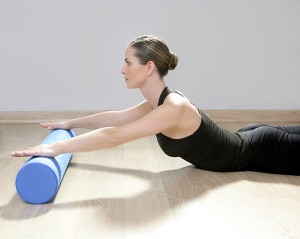Using Foam Rollers for Physical Therapy
 Physical rehabilitation has another tool to add to their arsenal. Look out Swiss balls, foam rollers are here to stay.
Physical rehabilitation has another tool to add to their arsenal. Look out Swiss balls, foam rollers are here to stay.
Often linked to massage therapeutics, foam rollers can activate trigger points in the body. People that have muscle or joint pain due to tightness, can benefit from using a roller in that it acts as the hands of a masseuse, slowly releasing active trigger points through each roll of the roller. You’ll notice that the foam acts a resistant to your body and works to your own body weight, almost like a chair’s cushion filling works.
Trigger points, or knots as most people know them as, are known for causing migraines, dizziness, and muscle pain. Active individuals, especially ones that partake in physical activities, are prone to having trigger points that can cause severe discomfort.
There are different types of foam rollers for people that have different pain tolerances. This is similar to purchasing custom foam cushions that are designed to fit your level of comfort. For people that have lower pain tolerance as well as more sensitive trigger points, a softer foam roller is recommended. The people that have more of a tolerance to discomfort along with trigger points that need more pressure to be activated should use a harder foam roller.
For maximum results, it’s best to use a foam roller two to three times a day. This helps in relieving the tightened muscles so that they do not become stiff at an early time of the day. A loose muscle will grant you a more full range of motion as well as a reduction of injury risk. Your muscles have a tendency to move with a lot more freedom once they are loose.